Dr. Todd Goes Pier Fishing, or How I (Almost) Helped Win The ORCA Antique Tackle Fishing Tournament
By Dr. Todd E.A. Larson
©2014 The Fishing for History Blog
Part II: We're Gonna Need A Bigger Pier
As others struggled to put together their jury rigged fishing outfits, we noticed the elderly couple next to us was having great success, pulling in one Spanish Mackerel after another. We asked their secret and they told us the fish were only about four feet under the water, so Butch would only let the bait sink up to where the mono leader met the linen line, and was soon rewarded with the first fish of the day, an eight inch mackerel. It was a pretty suave catch considering he had to set the hook by pulling the line with his hand.

I decided to rig up the spinning rod. The ca. 1960 DAM Quick reel had about 20 pound test vintage mono which was about as stiff as a piano wire, but I was still able to do something few others could do that day: cast the line out. My first cast actually resulted in a fish.
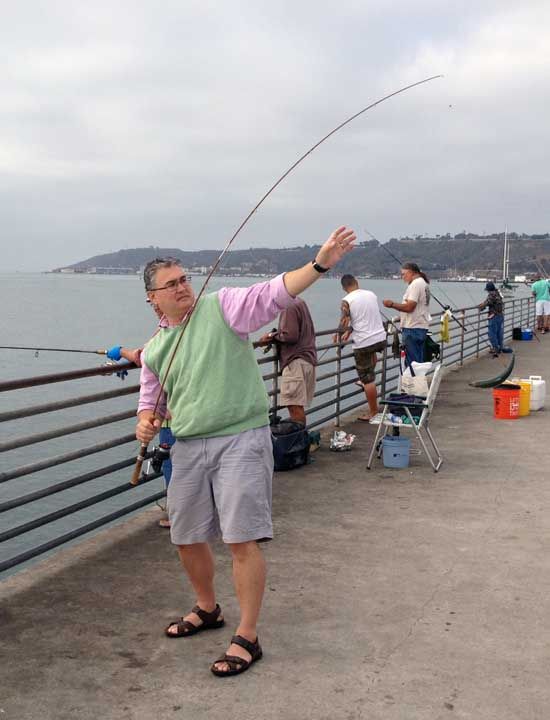
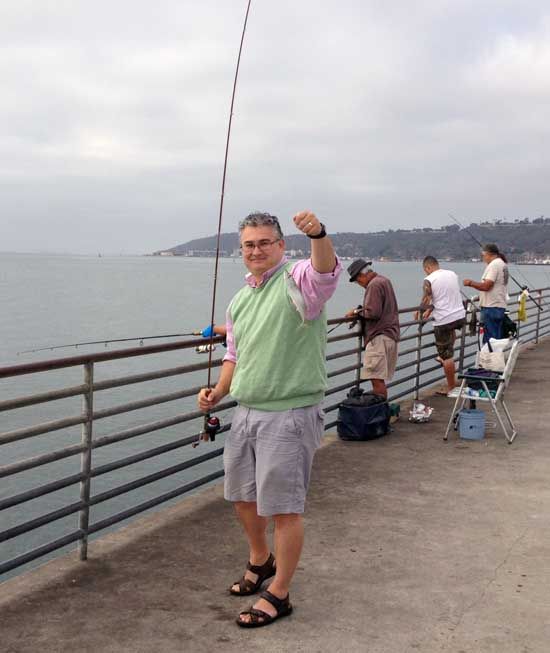
Pleased with the results, I passed the rod on to another ORCAn. Over the course of the next hour or so, a number of fish were caught, mostly in the eight to ten inch range. Butch and Paul Berinson also managed to catch Calico Bass, which are very beautiful fish. Anglers down the pier caught a couple of Guitar Fish, a type of ray. Several anglers were keeping their mackerel alive in buckets with battery powered aerators. We were told these fish made incredible live bait.
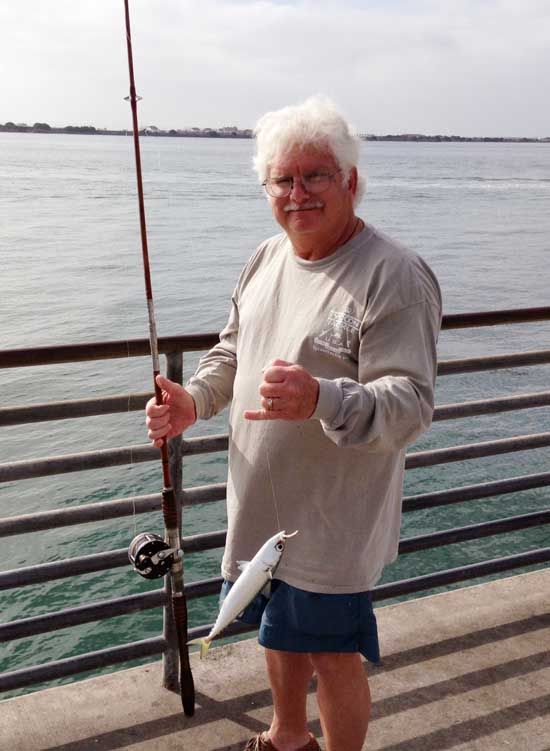

As I watched these fishermen a thought occurred to me. With this many bait fish (there were massive clouds of anchovies everywhere), there just had to be a shark somewhere out there. I mentioned this to Clay Hood, who agreed and began to rig up the E.M. Holm surf rod (paired with the Penn trade reel) with a heavy sinker and a larger hook. I grabbed one of the smaller mackerel of around five inches, Clay baited the hook, and lowered the rig down to the bottom on the other side of the pier.
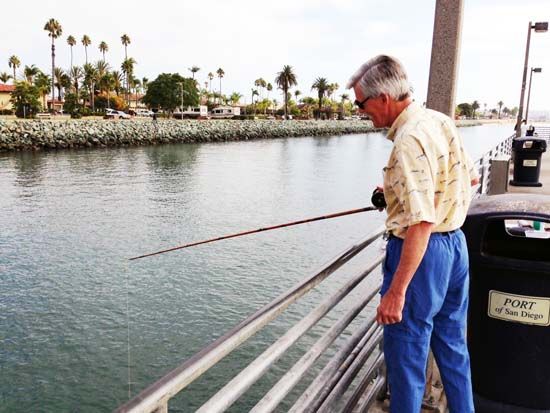
It was turning into a lovely day as we chatted about Clay’s tournament fishing history – he’s a really seasoned fishing vet who fished the Bassmaster Classic – when all of a sudden he noticed his bait going crazy on the bottom. As he began to reel the mackerel in, the rod quickly bent doubled and then suddenly snapped back. “Shark,” Clay said, as he reeled in the slack line. Sure enough, the line had been cut a foot above the hook.
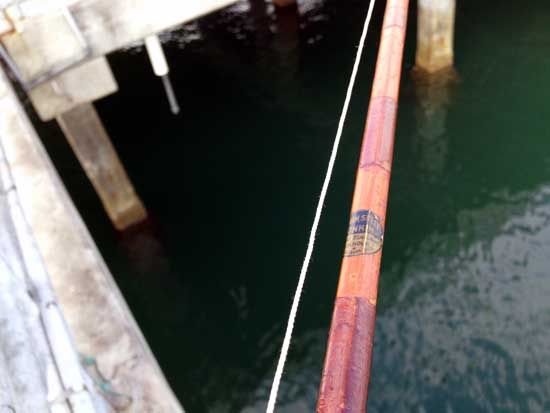
Something big lurked below the waters of the Shelter Island pier.
Undaunted, Clay rummaged through Brian Funai’s tackle box and found a steel leader, which he tied on. The problem was that, for some reason, the mackerel being caught were all around ten inches, twice the size of the original one Clay had used. Having no other choice, I brought a 10 inch mackerel over and Clay hooked it up to his rig and tossed it under the pier.
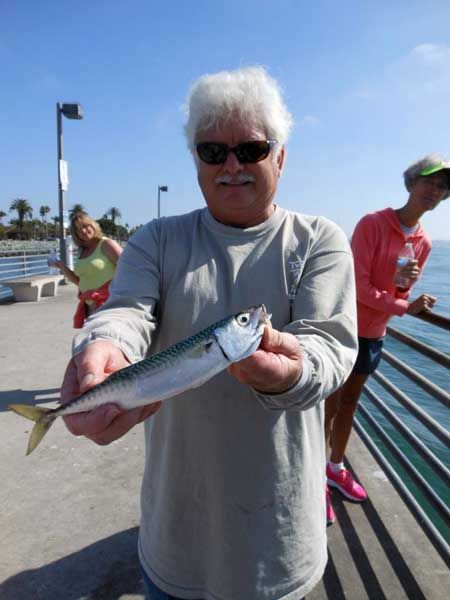
Over an hour passed with no sign of a fish. We passed the time talking fishing reels, of course, and noted the primitive nature of reels like the Penn Deep Sea Angler model. It had no anti-reverse, no free spool mechanism, no drag, and was the very definition of a simple winch. It did not even have a leather thumb drag like most of the saltwater reels of the 1920s and 1930s.
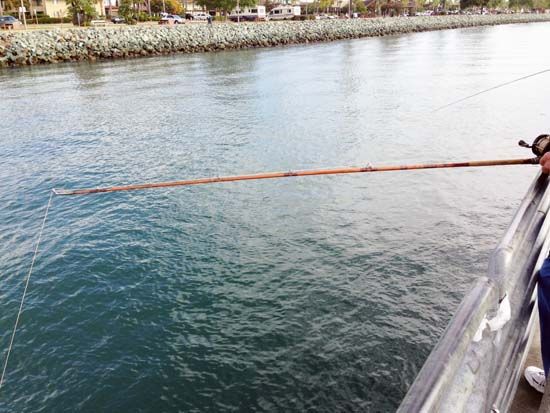
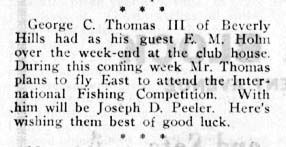
As Clay lifted the minnow off the bottom, once again the Holm rod bent to the butt. For a second or two, I thought that he had hooked up, but once again the rod snapped back to straight and the line went slack. I thought he had been cut off, but when he pulled his line up, all that remained of that mackerel was a head cut off at the gills.

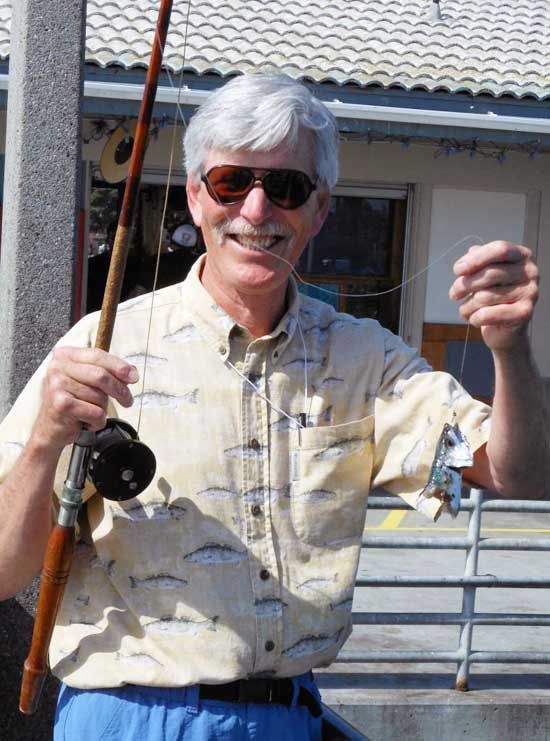
“Throw the head back in!” I implored, knowing the fish was probably still down there. Clay dutifully dropped the line, and no more than two seconds after it hit the water, his line went from vertical to horizontal in an instant.
In all my days of fishing, I have never seen a fish hit so fast and so hard as the shark that hammered Clay Hood’s bait on that San Diego pier. The visual evidence was striking; since the Penn had no anti-reverse, the handle spun like a windmill in a hurricane. I had heard the term “knuckle buster” many times in conjunction with these old saltwater reels, but this was the first time I had ever seen exactly what they meant by it. Anyone foolish enough to try and grab the handle when a fish like this hits would have broken fingers in a heartbeat.
The only way to stop the fish was to thumb the line, and Clay dutifully planted his thumb on the revolving spool as the shark ran directly under the pier. The Holm surf rod bent to the butt, the reel sizzled, and then it was all over but the shouting. The shark had wrapped itself around the pier on the far side and threw the hook. In three seconds that fish had taken a hundred feet of line, which if my math is not off, is around 23 miles per hour. That’s a fast fish, folks, and a speed easily reached by Shortfin Mako and Blue Sharks, both commonly found in the area. I’m not saying it was either of these species, but there can be no doubt it was a shark of some kind that hit that mackerel.
As we stood in stunned silence, some joker in the back quipped, “we’re gonna need a bigger pier.”
It was insane. I have never, and likely will never, ever see such a vicious strike, especially in conjunction with a vintage tackle rig. The whirring of that Penn reel’s handle is an indelible memory.
Later that day, as we listened to Catalina Tuna Club historian Michael Farrior discuss the history of that esteemed organization, he noted that injuries on Catalina were so common in the first part of the 20th century from “knuckle busters” that there was a medical clinic on site to take care of the injured anglers. I looked back as soon as he said this and saw Clay staring at his thumb, which was developing a nice blister from his attempts to stop the rampaging shark. We both smiled.
So my first attempt at pier fishing was a memorable experience. Not surprisingly, Butch Carey won the contest with a 10.5” Spanish mackerel, fitting for someone with a lot of pier fishing experience. But despite the fact that everyone caught fish, it was the one that got away, once again, that formed the best memory. Having cobbled together fishing outfits from the most mismatched vintage tackle you could find, we were still able to catch fish, and have fun doing it.
That sort of the point of all this, isn’t it? And to think, I nearly helped win the 2014 ORCA Antique Tackle Fishing Tournament.
I don’t think for a minute that I am not already developing a plan to help (almost) win the 2015 edition …
— Dr. Todd

What do you get when you turn a Midwestern college professor loose on the Bassmaster Classic & Expo in New Orleans, Louisiana? You get Lost on the Bayou, the interesting and funny memoir of a whirlwind trip to the Delta to witness one of the greatest gatherings of bass fanatics in history. If you’ve ever wondered what it was like to see the Bassmaster Classic Expo from the other side – the side of the vendors and celebrity anglers – this book is for you. From anecdotes about some of the great bass anglers of all-time (including Glen Lau and Billy & Bobby Murray) to inside analysis of some of the great anglers on the B.A.S.S. tour today to inside details of some of the major tackle companies, this is much more than a “fish out of water” memoir, it’s a subtle and detailed commentary on the state of bass fishing in America.
Purchasers of this book will also be entitled to a free download for reading on tablets, phones, etc. You will receive instructions on how to claim your COLOR digital copy when your books ships.
PRE-ORDER YOUR COPY OF LOST ON THE BAYOU BY CLICKING HERE!
No comments:
Post a Comment